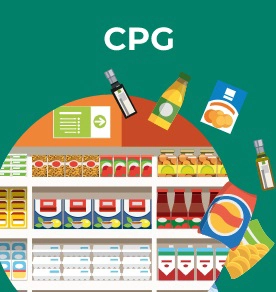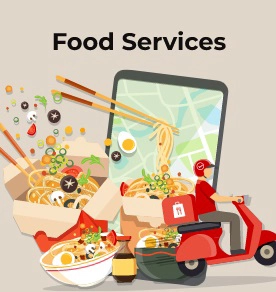Convenience to Lifestyle: RTC’s Big Leap in India

84 percent of consumers believe frozen snacks allow them to enjoy restaurant-style food at home, while 73 percent say they taste just as good as freshly prepared meals.
By Vaishnavi Gupta, Associate Editor
Aug 19, 2025 / 19 MIN READ
The Ready-to-Cook (RTC) and Frozen Foods category in India has undergone a dramatic transformation over the past few years. Convenience continues to be the key driver behind the category’s growth, but the scale of adoption has been unprecedented. Over the past two years, RTC has been the only packaged food segment to double in volume, attracting 18 million new households. In contrast, overall packaged foods in India witnessed a modest growth of around 8 percent, while RTC surged by 58 percent in 2024.
This rapid rise is not just about saving time in the kitchen anymore. The category’s growth is increasingly fuelled by innovations in taste, format, and variety, making RTC products more aspirational than ever before.
Shifting Consumer Perceptions
A few years ago, frozen foods were often dismissed as a compromise on freshness and taste. That perception is changing fast. According to the Yummiez's latest report, 84 percent of consumers believe frozen snacks allow them to enjoy restaurant-style food at home, while 73 percent say they taste just as good as freshly prepared meals. This marks a dramatic shift in how consumers view RTC and frozen foods.
Anushree Dewen, Head of Marketing & Innovation at Godrej Foods Ltd noted, “Consumers are becoming more confident in making smart, quick food choices that do not compromise on quality. The growing presence of air fryers and similar appliances has only made adoption easier.”
Akash Agrawalla, Co-Founder of ZOFF Foods echoed this shift, “Over the last 2-3 years, the Ready-to-Cook category has transformed from being a convenience-driven option to a lifestyle choice. Earlier, it catered mainly to urban professionals with time constraints, but today, it appeals to families, students, and even health-conscious consumers.”
The pandemic accelerated adoption, but post-pandemic, the sustained momentum highlights how deeply RTC has integrated into everyday life.
Growth Trajectories of Leading Brands
Godrej Foods Ltd has seen consistent double-digit year-on-year growth in its frozen RTC segment, backed by increased acceptance, strong urban penetration, and expansion into modern trade and quick commerce platforms. Dewen highlighted, “We currently have a stronghold in about 30–35 cities, which contribute heavily to our business. Going forward, our goal is to deepen this footprint and expand into untapped regional markets.”
McCain Foods India, a leader in frozen vegetable snacks, particularly French fries, has also built a strong franchise across modern trade and e-commerce. Aditya Krishna, Director of Sales & Marketing at McCain Foods India stated, “We are the market leaders in traditional trade and have successfully expanded across modern trade and e-commerce. Today, we are seeing good growth across all channels.”
Meanwhile, ZOFF Foods has entered the space with strong momentum. Agrawalla shared, “We recently launched our RTC range—5-Minute Gravy Mixes and 1-Minute Marinade Mixes—and the response has been extremely encouraging. Early repeat purchase trends suggest customers are finding genuine value in the taste-convenience balance we offer.”
Retail Strategies: Omnichannel is Key
For RTC players, retail strategy has evolved into a multi-channel approach. Godrej Foods focuses on driving availability and freshness in general trade, while leveraging visibility and in-store sampling in modern trade. Dewen explained, “Our retail strategy is about meeting consumers where they are and ensuring a seamless experience across channels.”
McCain emphasized the importance of in-store freezers, which have been critical to driving trial and category penetration. Krishna noted, “Our recent successes with vertical freezers have led to double-digit growth in India.”
ZOFF Foods takes a balanced approach, combining modern trade visibility, general trade reach, and online channels for direct feedback. Agrawalla added, “Modern trade and online are seeing rapid growth, but we also see huge untapped potential in general trade for reaching homemakers who may not yet be shopping online.”
The Quick Commerce Revolution
Quick commerce has emerged as a game-changer for the RTC segment. For categories where cravings spark spontaneous purchases, instant delivery has fueled faster adoption.
Dewen shared Godrej Foods’ strategy, “Our strategy is two-fold: platform visibility through banners and search optimization, and engagement through combos and limited-time offers.” For McCain, the fit is natural. “Quick commerce and McCain are a match made in heaven,” said Krishna. “We have more than doubled our business in the last two years - thanks to quick commerce.”
ZOFF Foods sees quick commerce as complementary to its D2C strategy. Agrawalla elaborated, “Quick commerce bridges the gap between impulse and fulfillment, while D2C allows us to control the brand experience and build long-term loyalty.”
Innovations Driving the Category
Innovation remains at the heart of RTC’s growth. Godrej Foods blends global aspirations with Indian traditions, introducing products like Lucknowi Seekh Kebabs, Cheesy Pizza Fingers, and Italian Sausages. Its playful yet informative packaging balances appeal for kids with transparency for health-conscious adults.
McCain has innovated with Air Fryer French Fries, reflecting how consumer cooking methods are evolving. Krishna highlighted, “These fries offer consumers restaurant-like results in an air fryer, something they couldn’t achieve earlier.”
ZOFF Foods focuses on regional authenticity, offering options like Rajasthani Laal Maas and South Indian Chettinad gravy. It is also addressing changing household dynamics with portion-controlled packs suited for nuclear families and single-person homes.
New Categories and Consumer Demand
Brands are constantly expanding their portfolios to cater to evolving consumer preferences. Godrej Foods has launched Hot & Crispy Chicken Bites with Atomic Sauce, cheese-loaded innovations like Cheesy Pizza Fingers, and street-food-inspired Chicken Momos.
McCain, while synonymous with French fries, continues to strengthen its appetizers portfolio. ZOFF Foods, even in its launch phase, has introduced preservative-free, low-oil gravies, staying aligned with health-forward trends. Agrawalla pointed out, “We’ve focused on delivering authentic flavors and easy preparation, which has resonated well with customers looking for both variety and familiarity.”
Challenges Ahead
Despite the strong momentum, the category faces challenges, particularly in cold chain infrastructure. Dewen identified this as a critical bottleneck: “To overcome this, we are investing in freezer installations and logistics upgrades to ensure quality is maintained from production to point of sale.”
Another challenge is the persistent myth that frozen foods contain preservatives. Godrej Foods is actively debunking this through campaigns that highlight IQF (Individually Quick Frozen) technology, which locks in nutrition without preservatives.
For McCain, the logistical challenges vary across geographies, but its wide distribution network gives it an edge. Krishna noted, “We drive distribution through a network of partners who have stood with us for a long period of time.”
The Future of RTC in India
Looking ahead, the RTC and frozen food category is expected to become a staple in every Indian kitchen.
Dewen envisioned, “Over the next 3–5 years, we aim to lead this transformation by offering cleaner labels, a wider variety, and deeper market penetration. Frozen food will no longer be a backup; it will be the smart, everyday choice.”
Krishna sees continued expansion into Tier II and III markets, along with the possibility of international opportunities. “Our goal is to continue to increase distribution and strengthen our domestic presence, while being open to markets that align with our long-term vision.”
Agrawalla outlined ZOFF Foods’ ambitions, “The RTC category in India is just scratching the surface. In the next 3-5 years, it will evolve into a staple category. Our goal is to make cooking from scratch and cooking from ZOFF Foods equally respectable choices.”
The Ready-to-Cook (RTC) and Frozen Foods category in India has undergone a dramatic transformation over the past few years. Convenience continues to be the key driver behind the category’s growth, but the scale of adoption has been unprecedented. Over the past two years, RTC has been the only packaged food segment to double in volume, attracting 18 million new households. In contrast, overall packaged foods in India witnessed a modest growth of around 8 percent, while RTC surged by 58 percent in 2024.
This rapid rise is not just about saving time in the kitchen anymore. The category’s growth is increasingly fuelled by innovations in taste, format, and variety, making RTC products more aspirational than ever before.
Related Stories
Once considered a quiet corner of the apparel industry, India’s innerwear market has emerged as one of its most vibrant growth engines. What was traditionally a necessity-driven category has now…
- By Vaishnavi Gupta
- |
- 8 Min Read
In a landmark move that could reshape India’s Rs 16 lakh crore dairy industry, the 56th GST Council has approved a rationalization of GST rates on milk and milk products — a decision that has already…
- By Vaishnavi Gupta
- |
- 7 Min Read
Snacking in India is getting a healthy makeover. As more people choose mindful eating and nutritious options, homegrown brands are changing the way we think about snacks. From nuts and trail mixes to…
- By Richa Fulara
- |
- 10 Min Read




